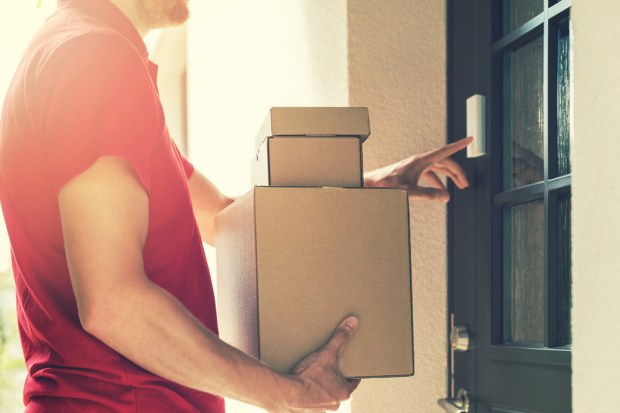The Struggle For Better eCommerce Deliveries

It’s a problem that still vexes retailers: How to craft logistics so that online consumers don’t abandon you. Developments over the last few weeks show not only where those merchants are headed, but what isn’t working. Among the projects with the most interest is whether Target can sell more online goods by exploiting its Shipt delivery service.
Hoping to beef up its same-day delivery capabilities, Target paid $550 million to buy the company late last year. Target is using Shipt initially for deliveries of such products as groceries and household products, charging customers $99 per year. By 2019, Shipt will cover all major product categories, according to comments from Target chairman and CEO Brian Cornell earlier this year at the Shoptalk conference in Las Vegas.
Target is riding a digital upswing, with the chain’s online sales growing 28 percent year over year in the first quarter of 2018. Without offering hard numbers, Cornell said that Shipt is “expanding rapidly,” with the service already in half of Target’s locations — accounting for some 70 markets — by the end of Q1.
That’s not it for Target, either. The chain intends to launch a same-day delivery service in selected markets. The service enables shoppers to peruse products at brick-and-mortar locations and have couriers deliver purchases at a later time. And the Target Restock next-day delivery service continues to expand.
The motivation is clear: Consumers not only increasingly expect to get their products quickly, but a quarter of them would pay extra for it, according to Cerasis, a transportation management firm.
It’s almost unnecessary to say that nearly every retailer is chasing Amazon and whatever it does, but it is true — including, perhaps, for logistics. Competing retailers, along with the U.S. Postal Service, FedEx Corp. and United Parcel Service, are seeking any signals from the eCommerce firm’s new “Shipping with Amazon’s” in-house logistics program, which reportedly is starting off in Los Angeles and maybe other locations.
For now, “Shipping with Amazon” does not seem to pose an existential threat to shippers. That’s because the retailer likely would have to spend some $100 billion to buy the vehicles and other equipment, and to otherwise construct a network, that could rival the likes of FedEx and UPS, according to Cowen and Co. analyst Helane Becker.
In general, a retailer trying to bring logistics in-house, especially for “DYI last mile delivery,” can experience “unnecessary strain” from such attempts, according to On Time Logistics, a delivery services firm that is based in Arkansas, the state in which Walmart has its headquarters. Among the main problems besides acquiring a fleet of delivery vehicles is training staff for logistical work and handling costs such as insurance and fuel (an expense that can significantly fluctuate even if a retailer were as smart about hedging as, say, some airlines are).
Other challenges that could bedevil in-house logistics — even if done only partly — are likely the same problems faced by fulltime logistics providers, according to analysts and research papers. They include the creation of new business processes to handle those tasks, and making sure customer service agents and technology are up to the task of offering customers the transparency about deliveries that they’ve come to expect.
The seemingly mundane issue of hiring drivers also plays a huge role. Consider this: Even with the expected advent of self-driving trucks, the United States faces a shortage of 50,000 truck drivers, according to the American Trucking Association. Over the next decade, the U.S. will need nearly 900,000 more truck drivers to meet expected demand.
Such analysis can seem self-serving when coming from independent logistics providers, but that does not make it untrue. On Time Logistics, like other such companies that have weighed in on the matter, goes on to say that if any company can bring logistics and same-day deliveries in-house, it would be large chains like Walmart.
But even that retailer has apparently stumbled in the eCommerce logistical game.
Earlier in May, Walmart reportedly ended a program that had Uber and Lyft drivers deliver groceries from the retailer’s stores to customers — that program a clear attempt to at least roughly imitate Amazon. Walmart gave no details about why the program ended but a company spokesperson said the chain would use other delivery service providers in the four markets where it had been using Uber to deliver groceries. Walmart also counts Deliv, Postmates and DoorDash as delivery partners. (The retailer also offers free store pickup of online grocery orders.)
Another potential path to better logistics for eCommerce operators involves crowdsourcing. The latest Intelligence of Things Tracker from PYMTS includes a deep dive into that concept via an interview with Marie Le Page, co-founder and U.K. CEO of Europe-based connected delivery service LivingPackets.
The basic idea is this: Pay fees to drivers to deliver packages on the way to destinations. Internet of Things technology would help ensure that packages reach their intended recipients without damage or tampering. Packages have automatic locks and sensors to monitor humidity, temperature and other attributes that matter to sensitive shipments, among other protections offered.
The coming months will no doubt bring more news of logistic experiments, launches and failures as retailers try to figure out how to best get products quickly to impatient consumers.
